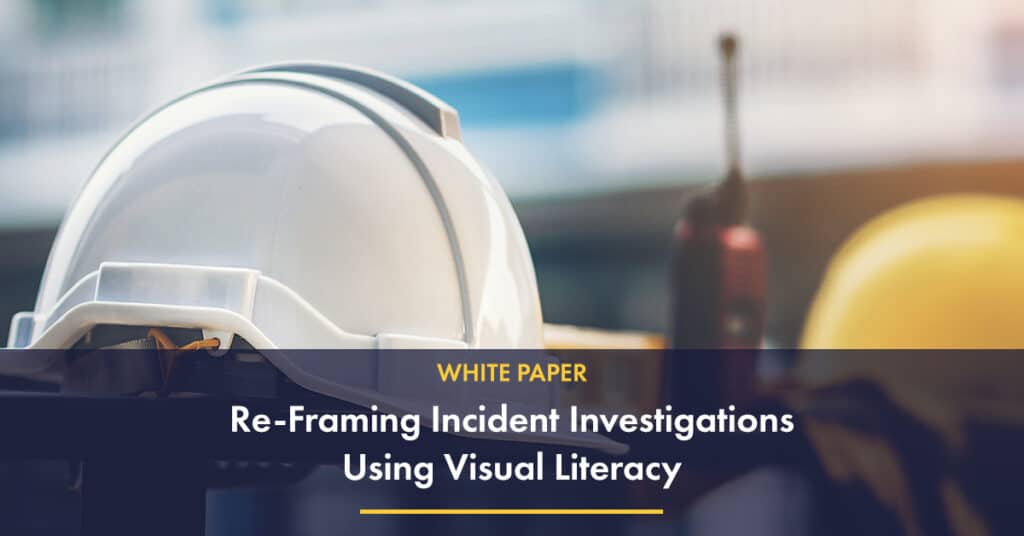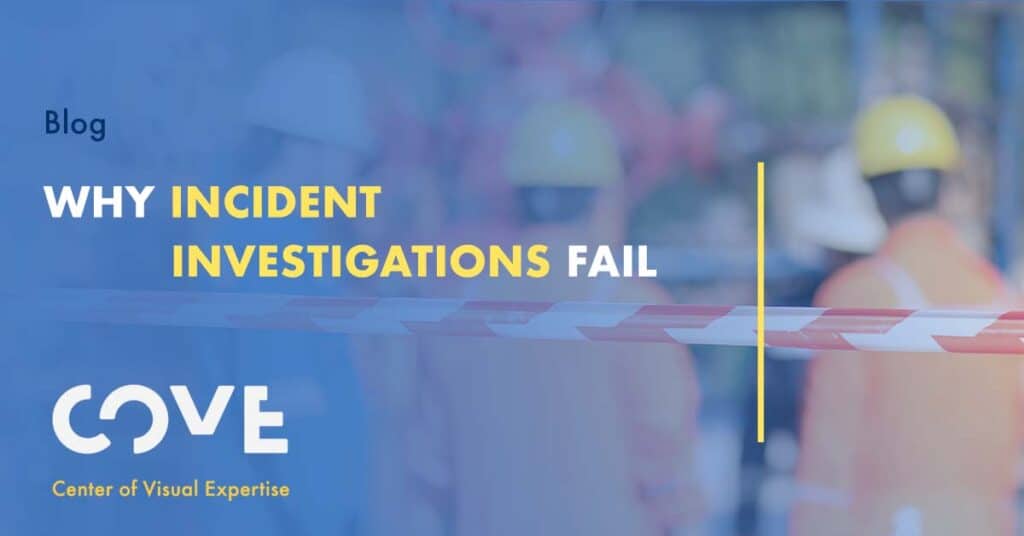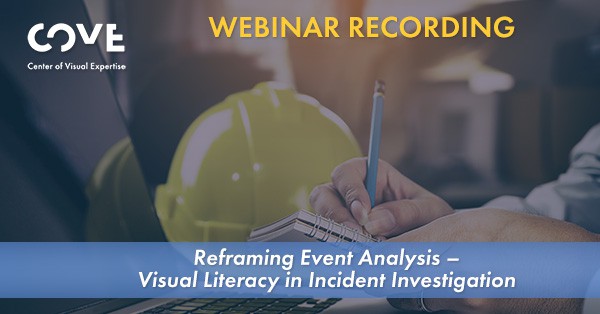Incident Investigation
Improving the quality of information gathered post-incident for determining meaningful corrective actions
Reframing Incident Investigation Using Visual Literacy
Incident and Near Miss Investigation is important to an effective safety program and to managing risk reduction over time. However, time and again we find that investigations are rushed and incomplete, leading to conclusions that are inaccurate and recommendations that don’t provide the necessary corrective actions. All of which can lead to recurrence of an event that was ultimately avoidable.
These challenges in Incident Investigation come from gaps in what we see, the information that we collect, and associated biases that cause or allow errors to occur and undermine our safety programs. Common biases include overconfidence bias, availability bias, confirmation bias, status quo bias, and implicit prejudice. For effective investigations to produce meaningful outcomes, we need to understand various cognitive biases, be aware of how easily they crop up, and learn to recognize and discount them for clarity and accuracy.
Visual Literacy helps mitigate many of the common problems in Incident Investigation by:
Improving the quantity and quality of the inputs we collect following an incident
Improving the analysis of the data the we collect
Understanding how to recognize and overcome bias that impacts our analysis and conclusions
Applying effective communication skills that improve understanding and decision making for effective corrective actions and implementation.
“People often see what they expect to see, and hear what they expect to hear.”
Harper Lee, To Kill a Mockingbird
Resources



Additional Focus Areas Where Visual Literacy Can Positively Impact Your Safety Efforts
Lorem ipsum dolor sit amet, consectetur adipiscing elit. Ut elit tellus, luctus nec ullamcorper mattis, pulvinar dapibus leo.
Seeing More Effectively Requires A Systematic Approach
Organizations striving for continuous improvement in their safety results should consider integrating Visual Literacy into their health and safety programs.